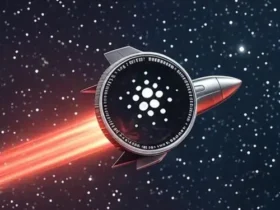L2 is interoperable with Bitcoin and Lightning, and allows developers to create applications.
Spark uses a shared signing address between the user and Spark Operators (OS).
Bitcoin solutions development company Lightspark launched Spark, a new layer 2 designed to enable instant, cheap and unlimited self-custody transactions of bitcoin and stablecoins.
This second layer is presented as “a trust-minimized solution designed to scale Bitcoin and expand the Lightning network,” according to the team behind its development.
Spark, which is a second layer of Bitcoin interoperable with self-custody wallets, is defined as a tool to “address the remaining challenges of Bitcoin and Lightning,” focusing on promoting the scalability of these wallets and enabling stablecoins, such as USD Tether (USDT). ) within the Bitcoin ecosystem.
The general idea of Spark is that it “allows Bitcoin assets to be spent off-chain instantly,” according to the second layer webpage.
This layer 2 allows users send and receive funds natively via Lightningall through a network that is open source and protected by the security of Bitcoin. This is due to the way it is designed to operate in conjunction with the Bitcoin mainnet and the Lightning network, using the inherent characteristics of these technologies to ensure the integrity and security of transactions, such as the use of addresses and keys.
The operation of Bitcoin’s second layer, Spark, is based on a shared signature address where the user maintains full control of their funds. In this direction, The participants are the user and the Spark Operators (OS). The latter, which are essential pieces for the operation of the Spark protocol, facilitating the transfer of assets through key settings without compromising the user’s security and control over their funds.
When you want to transfer ownership of funds, OSes adjust their keys so that the new owner takes control, while the general signing key remains static. This mechanism ensures that at all times the current owner has full control of their funds without the need for third party permission.

“The combination of these two features unlocks the full potential of Bitcoin, helping it become the SMTP for money (Bitcoin, stablecoin, fiat). Spark is easy to deploy and use, very cheap, and fully interoperable with the current Bitcoin ecosystem. With it, developers can create novel applications that were previously considered impossible in Bitcoin,” commented the Lightspark team.
Spark allows several forms of interaction: users can move funds in and out of Bitcoin, transfer funds within Spark to other users, and also move funds in and out of Lightning. This flexibility seeks to increase the utility and adoption of Bitcoin through greater speed and efficiency in transactions.
Lightspark, the company behind Spark, already has a track record of developing solutions for Bitcoin. Previously, they were responsible for the implementation of the Lightning network at Coinbase, the largest cryptocurrency exchange in the United States, and also in the services of NuBank, one of the largest neobanks in Latin America, both milestones reported by CriptoNoticias.
This article was created using artificial intelligence and edited by a human Editor.






Leave a Reply